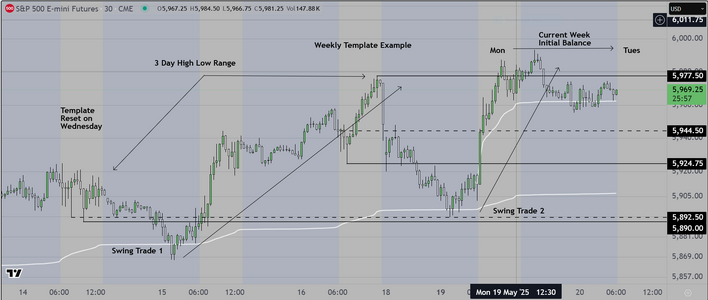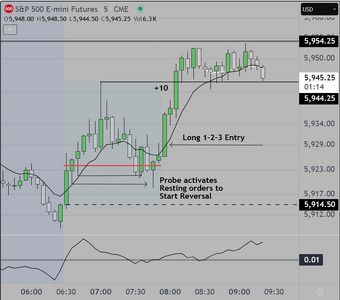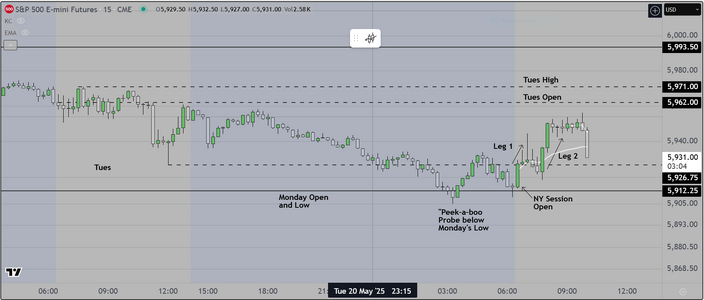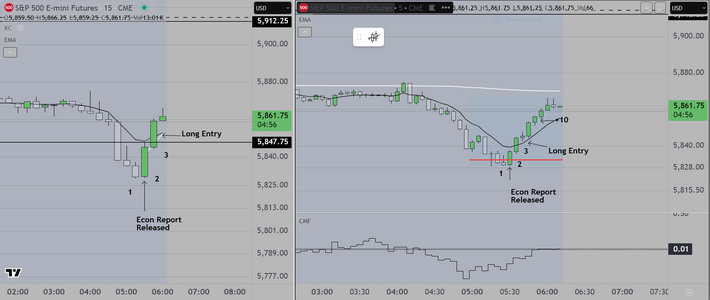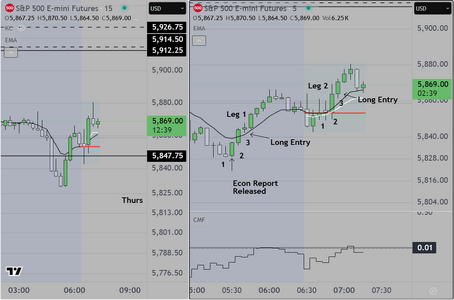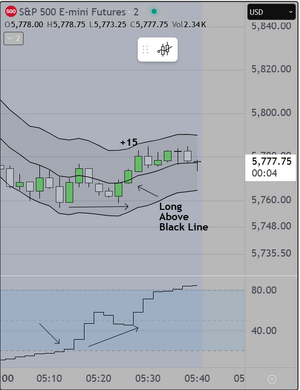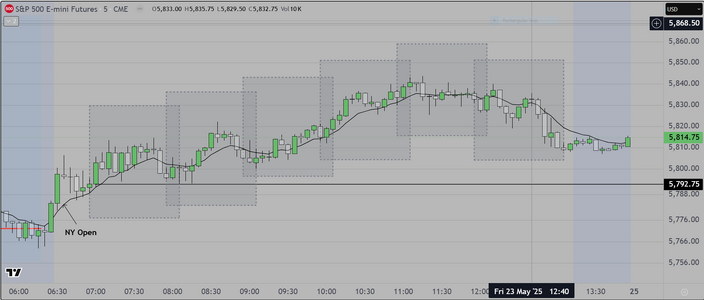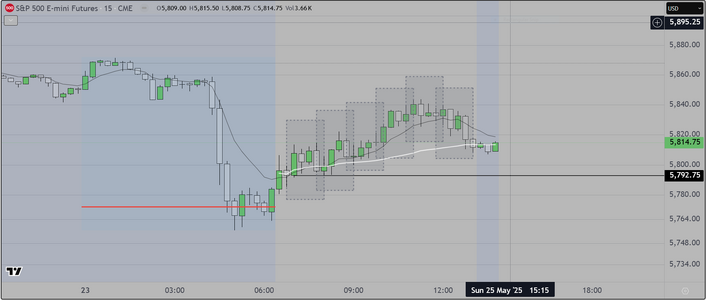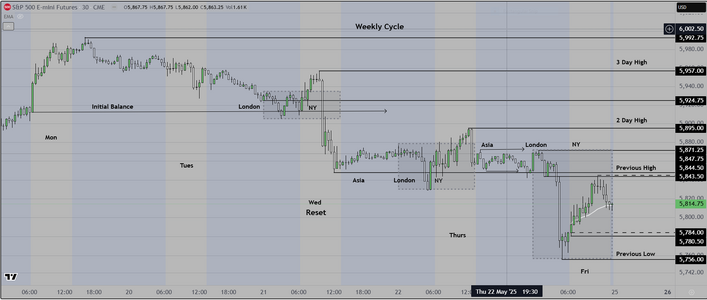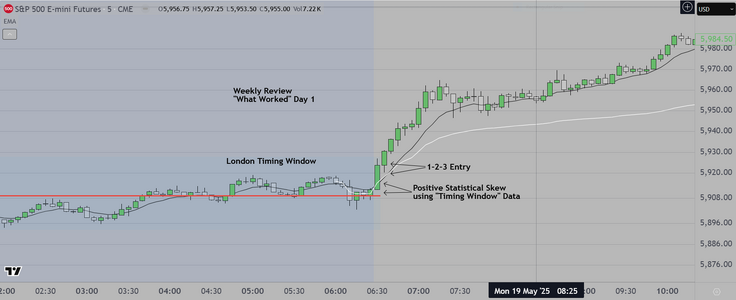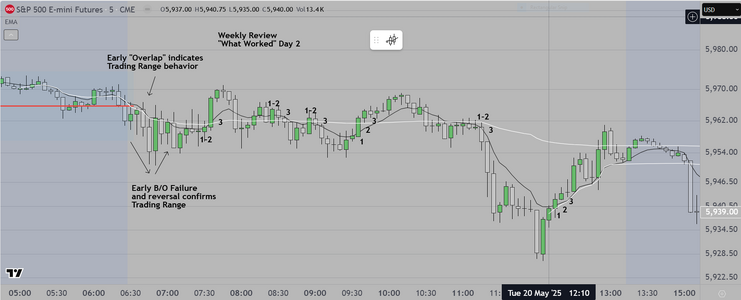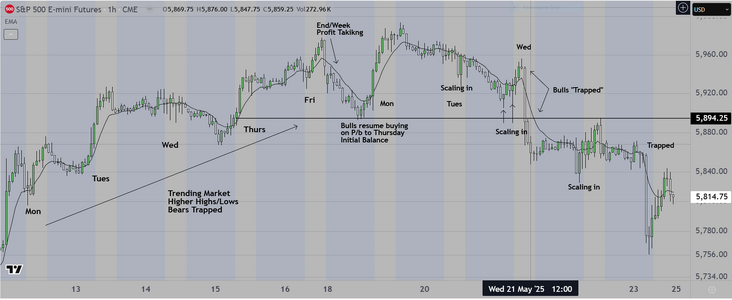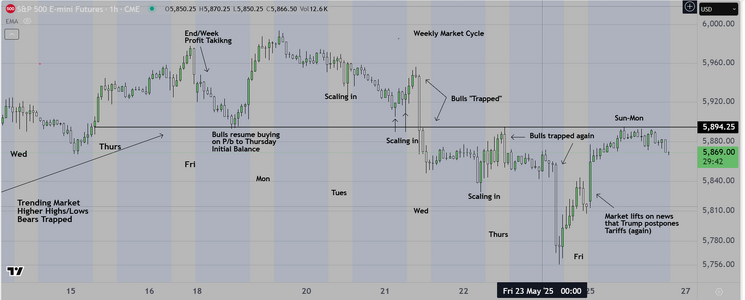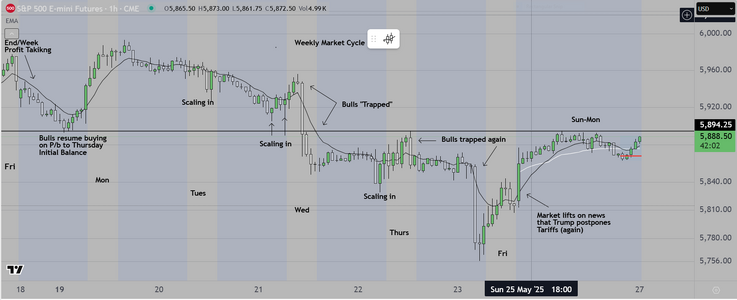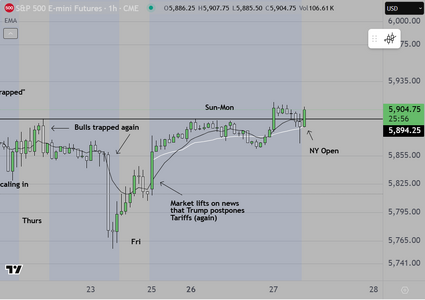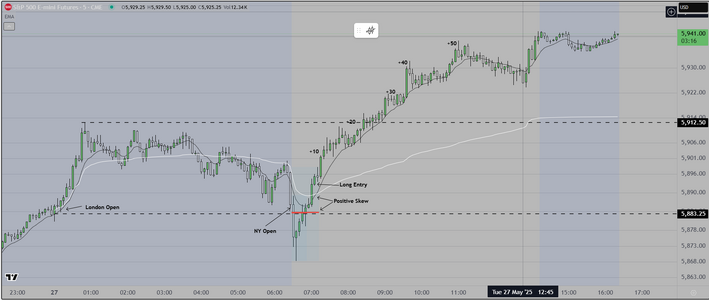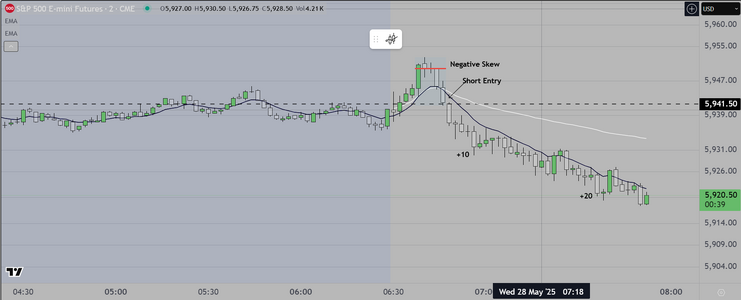Another Day, another dollar
The attached chart shows the simplified version that I teach
The focus is on teaching struggling traders to identify where
they are going wrong and correct that.
What I found in my previous classes, was as follows
1) Lack of preparation
2) Inability to "align their thinking with institutional intent"
3) No system edge
4) Poor choice of, and undisciplined use of the tools of the trade
5) Unskilled decision making on both ends (Entry & Exit)
The result is inevitable
The Chart cannot show the pre-planning that goes into this process
We assume readers know of our preparation over a weekend to analyze
previous price action and economic news. The chart below shows what
comes next. The skill is to identify the price action on the open, and react
appropriately. We monitor for a specific period of time in order to determine
whether the market is trending or in a trading range. Once we make THAT
decision we enter, at the appropriate time, and designate a profit target and
stop loss. The tools have already been specified. How to use them is part of
the class. Once a student has a feel for this, we look at the decision making
process in detail, especially how to reduce stress, by relying on the system
rules. As with professional sports, success depends on 1) talent first, then on
2) preparation, and finally on 3) "reps" (practice) and by that we mean good
practice, that insures that the student trader is learning the right skills, rather
than developing bad habits.
Readers may remember that we suggest trading within a specific timing window
then getting out with a profit. As with any similar situation (casino gambling comes
to mind) the longer you stay, the more the odds favor that you "give back" what
you have won. Once you've earned it, take your money and go live your life.
Good luck

